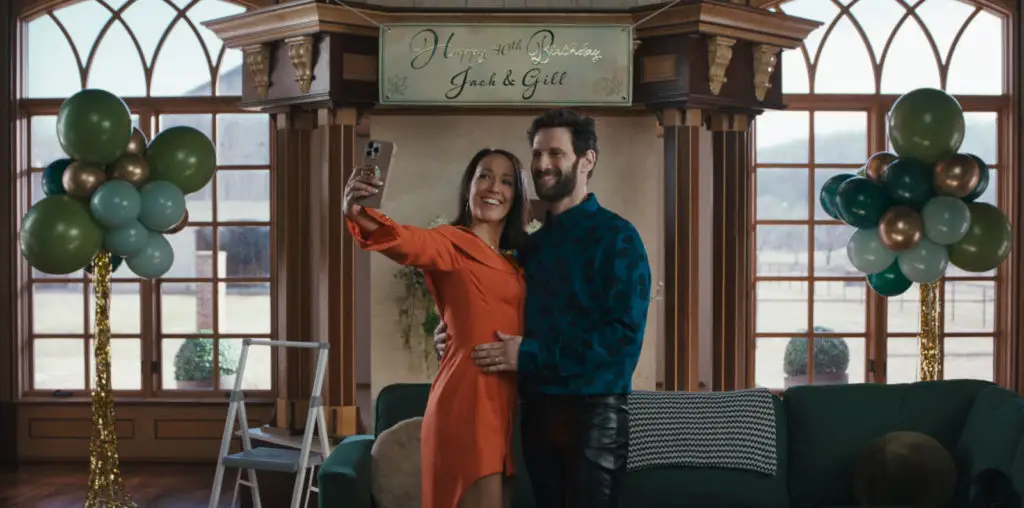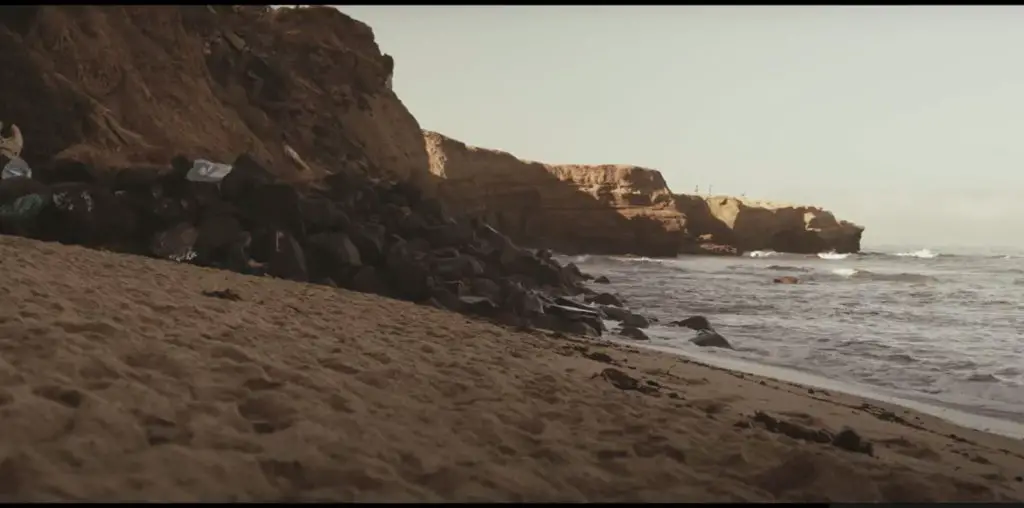
Prison isn’t just the L.A. County Jail where Sandra (Elpidia Carrillo) mops the floor against harsh sunlight streaming through the windows. It’s the supermarket where a pregnant Diana (Robin Wright Penn) encounters a former lover (Jason Isaacs) and is internally tormented as to whether she should have stayed with him. It’s the house where distraught Holly (Lisa Gay Hamilton) demands to her sister (Sydney Tamiia Poitier) the need to see her father alone. It’s the posh apartment building where Sonia (Holly Hunter) and her husband (Stephen Dillane) meet their friends (Jason Isaacs and Molly Parker), and uncomfortable truths emerge. The two rooms in the house where Samantha (Amanda Seyfried) talks to her parents (Sissy Spacek and Ian McShane) also is a kind of prison. It’s difficult enough for Lorna (Amy Brenneman) to attend the funeral of her ex-husband’s deceased wife, but even worse when a few people claim she shouldn’t even be there. And the places and characters go on, as only director Rodrigo Garcia could see them, in a very novel way.
No cuts, no mournful fade-outs, and no stopping is what he was thinking. In having Steadicam shots of 10-12 minutes each, all the actors involved really have to give it everything they can in skill, stamina, and understanding of their characters. Garcia and cinematographer Xavier Pérez Grobet employ harsh white light as they hold their own magnifying glass to the women whose lives are their jail cells. Sandra is the first woman, spending her days inside the L.A. County Jail, angry over the phone in the visitors’ area not working, preventing her from talking to her daughter.
The figurative prisons are all around L.A. and populated by women walking around, fretting, worrying, seething, frustrated, sad, and never completely pleased or content. Penn is affecting early on in her story with Isaacs as they talk about what they’re up to now, and delve into a painful past, throwing Penn into an unpleasant conundrum which leads to a heart-rending final moment that is as complete as Garcia makes it. These women will never fix their own lives just for our satisfaction. Their problems go beyond a running time, fictional as they are. But in human spirit, they are immensely real. Dakota Fanning has what so far is her finest role, as Maria, young daughter to Maggie (Glenn Close), discussing certain issues in life while walking around a graveyard and eventually sitting down. She is so deeply connected with Close and vice-versa, a proper final story in a wrenching journey, as they are the only two characters entirely outside. During “Ruth”, involving the mother (Spacek) to the ever-patient Samantha (Seyfried), Spacek does step outside to watch an arrest, but she under the roof of a motel and therefore not entirely outside. The hits just keep on coming as the fair Amanda Seyfried proves her filmic worth, going from the ditzy Karen Smith in “Mean Girls” to the saintly Samantha and hopefully never veering from this luminous path. It’s even more of a surprise that not only are the women well-represented, but the men of “Nine Lives” appear in the forms of such names as Ian McShane and Joe Mantegna, each as talented as the women.
Garcia is a thoughtful filmmaker not only by the group of actors he has gathered, but in remembering that there has been and will be people watching his movie. He has no ill will toward the state of minds sitting in the movie theaters and prefers to try to help people understand what he is saying. He’s clever not only in the cinematography and the women constantly within walls of some form, but also in the gradual revelation of his themes, spoken by Henry (Aidan Quinn) during “Ruth” and Camille (Kathy Baker) during her titular tale. It’s as if he knows exactly when people will be wondering just what the heck they are watching and if it’s supposed to mean something. It’s also a reward for those paying attention because as the important thematic words are spoken by Quinn and Baker, we immediately flash back to the characters beforehand and their stories become even deeper than we previously understood. Suddenly, it all comes to a head. The reward not only is in the presence of actors worth seeing every day of the year, but in the bitter look at lives trying to be lived. And as that piano-based score envelops “Nine Lives” during some of the stories, we are allowed our own emotions without being forced to think a certain way. Also, so as not to forget that we one way in private and one way to people we don’t know, Garcia reintroduces a number of the characters in other stories, taking on lives away from their emotions. For example, Holly reappears during “Camille” as a nurse at the hospital. It’s the way life is and it’s also the way Garcia triumphantly opens our minds which makes him one of a few filmmakers to admire. With the camera, he’s not afraid to try what has been abandoned. With his words, he’s cautiously eager to show life the way he sees it. It’s refreshing to watch it all unfold and worth seeing again.

